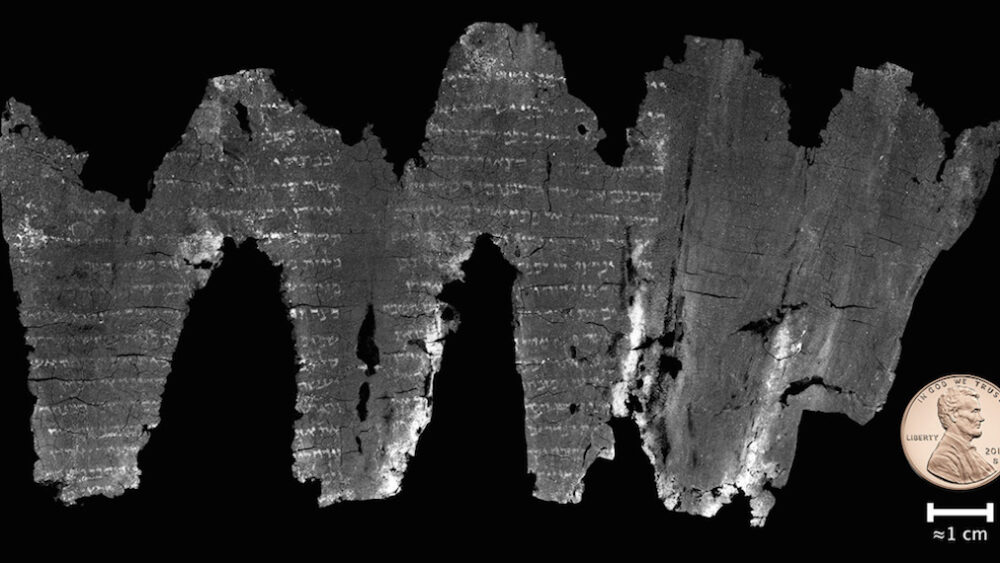Advanced new tools for reading Old Testament scrolls
Sophisticated technique means ancient texts can be preserved and digitally enhanced
Imaging technology used to scan brains in 3D has been applied to ancient Old Testament scrolls, heralding a valuable tool in preserving and unlocking precious manuscripts.
Results of this groundbreaking archaeological process of digital enhancement were recently published by Science Advances journal.
However, news reports have overstated some of the importance of this computer-enabled reading of the En-Gedi scroll.
While there have been online claims that the scroll is the earliest copy yet found of an Old Testament text, the journal article does not provide a confirmed dating of it.
Without this dating, the exact age of the scroll cannot be verified as yet.
The old process was problematic, running the risk of damaging or ruining the manuscript. The new technology is non-invasive.
But the impact of the imaging development shouldn’t be diminished, according to Dr Chris Forbes, Senior Lecturer in Ancient History at the Department of Ancient History at Macquarie University, Sydney.
“The last few things have not been ‘real’ but this one clearly is,” said Dr Forbes about how the use of 3D technology is of greater significance than other recent announcements in manuscript studies.
The En-Gedi scroll was found in 1970 in Israel, at a site of Jewish significance dating back to the late 8th Century BC. The scroll had been badly burned and turned to charcoal.
For most of the last century, ancient biblical manuscripts have been delicately unrolled through a painstakingly slow process. This process was problematic, running the risk of damaging or ruining the manuscript. The new technology is non-invasive and detects differences between the manuscript’s various materials.
“What they essentially have done is a high-definition 3D scan, like the way you would with medical imaging such as a brain scan,” said Dr Forbes, pointing out that among the En-Gedi research team is Emanuel Tov, one of the world’s leading experts in Biblical archaeology.
… can give us a great deal of confidence in the exacting work of the ancient copyists – in faithfully transmitting the biblical text over time.” – Dr Karin Sowada
Dr Forbes and his colleague Karin Sowada note the En-Gedi study also report that the scroll’s text appears to be “completely identical” to the Masoretic texts – the trusted tradition of ancient Jewish scribes whose manuscripts inform most Hebrew Bibles and Old testament translations.
“It’s been reported that the manuscript itself is very faithful to the Masoretic text,” said Dr Sowada, Honorary Associate in Macquarie’s Department of Ancient History and lecturer in Archaeology and the Bible at Mary Andrews College, Sydney.
“In a sense it confirms what we already know – ancient copyists of the scribal tradition were very particular about the accuracy of their work. The very fact it is being reported that this copy of Leviticus is very close to the manuscripts that are still used today, can give us a great deal of confidence in the exacting work of the ancient copyists – in faithfully transmitting the biblical text over time.”



